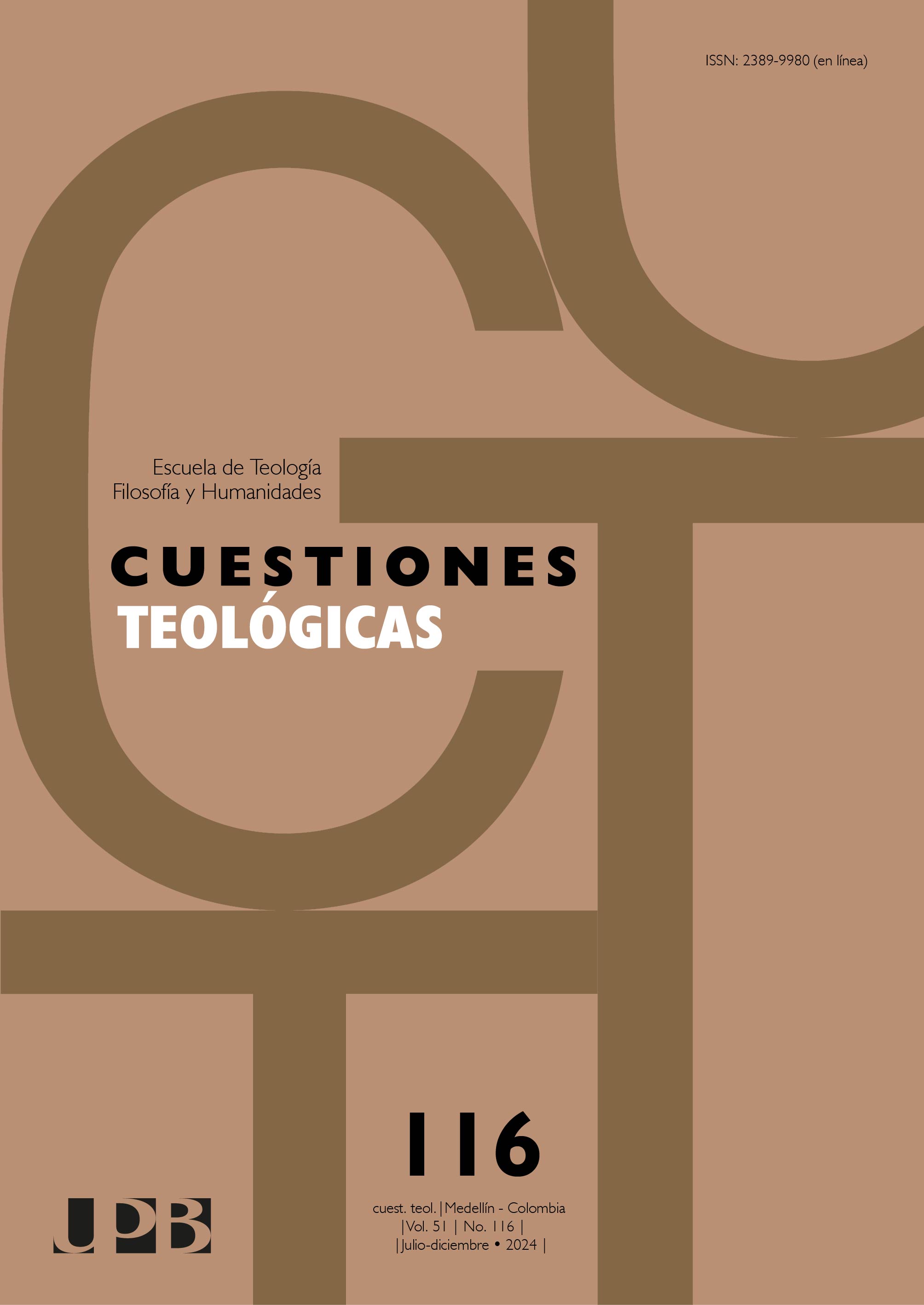The narrative of the rich man and the beggar: an investigation from the perspective of greimassian semiotics
Main Article Content
Abstract
The biblical passage from Luke 16, 19-31 is one of the most cited and discussed in the New Testament. However, when analyzed based on the relationships engendered following the narrated facts, a series of presupposed narrative programs contributes to the elucidation of the meaning of this text. This research, therefore, will analyze the aforementioned passage from the perspective of Greimasian semiotics. The method aims to reveal the generative path of meaning and highlight the intratextual elements, which make up the path of construction of the meaning of the passage. It allows you to analyze your superficial and deep structures: it goes from the simple to the complex, from the most abstract to the most concrete. It can thus highlight the semantic oppositions from which the meaning of the text and its fundamental semantic category are constituted. The method has the potential to represent the relational organization between the social conditions of the subjects of the narrative. Furthermore, it provides neutral methodological support that avoids a priori conclusions and bias. The analysis of intertextuality completes the process started with Greimasian semiotics. This is because a careful reading of Lc 16,19-31 will not ignore its immediate and broader context: Luke and Acts read sequentially. By placing the parable in this broader narrative, Luke's readers could perceive connective elements, linking the story told by Jesus to what was happening in the early church. Thus, in Jesus' mouth the story of the rich man and the beggar was told as a criticism of avarice, but in Luke's editorial plan it was used to challenge believers to get involved in caring for the poor.
References
Badir, S. (2012). How the semiotic square came. In J.-Y. Beziau & G. Payette (Eds.), The square of opposition: a general framework for cognition (pp. 427-439). Bern: Peter Lang. Recuperado de https://orbi.uliege.be/handle/2268/170295
Barros, D. L. P. (2005). Teoria semiótica do Texto. São Paulo: Editora Ática.
Bíblia: João Ferreira de Almeida Atualizada. Disponível no programa e-Sword, versão 13.0.0.
Brasil, L. L. (2011). Michel Pêcheux e a teoria de discurso: desdobramentos importantes para a compreensão de uma tipologia discursiva. Linguagem - Estudos e Pesquisas, 15 (1):171-182. doi: 10.5216/lep.v15i1.25149
Carvalho, A. S. (2019). A interpretação nas teorias linguísticas e literárias. São Paulo: Editora Reflexão.
Carvalho, A. S. (2020). O homem rico e Lázaro: uma leitura sob a perspectiva do contexto econômico e dos paralelos pagãos. Pesquisas em Teologia: PqTeo, Rio de Janeiro, 3 (6):331-350. doi: 10.46859/PUCRio.Acad.PqTeo.2595-9409.2020v3n6p331
Carvalho, A. S. (2022). A noção de intencionalidade em Hirsch e o conceito de sentido em Pêcheux: dois horizontes na interpretação e novas possibilidades de leitura do texto bíblico. ReBiblica, Rio de Janeiro, 3 (6); 325-343. doi: 10.46859/PUCRio.Acad.ReBiblica.2596-2922.2022v3n6p325
Carvalho, A. S. (2022). Parábola bíblicas: o básico para ler e entender. São Paulo: Editora Reflexão.
Cortina, A. (2017). Percurso da semiótica por meio das obras de Greimas. Estudos semióticos. Recuperado de https://www.revistas.usp.br/esse/article/view/141605/136613
Dodd, C. H. (1974). Las parábolas del reino. Madrid: Ediciones Cristiandad.
Fee, G., Stuart, D. (2011). Entendes o que Lês. São Paulo: Vida Nova.
Felluga, D. (2011). Introductory guide to critical theory. Modules on Greimas II: on the semiotic square. Purdue University. Recuperado de http://www.purdue.edu/guidetotheory/narratology/modules/greimassquare.html
Fidalgo, A., & Gradim, A. (2005). Manual de semiótica. Portugal: UBI. Recuperado de https://www.bocc.ubi.pt/pag/fidalgo-antonio-manual-semiotica-2005.pdf
Fiorin, J. L.(2000). Elementos de análise do discurso. São Paulo: Contexto.
Floch, Jean-Marie. (2014). A contribuição da semiótica estrutural para o design de um hipermercado. Galáxia, São Paulo, 14 (27): 21-47. doi: 10.1590/1982-25542014119610
Fricke, R. (2005). Las parábolas Jesús: una aplicación para hoy. El Paso: Editorial Mundo Hispano.
Greimas, A. J. (1976). Pour une théorie des modalités. Langages, Paris, (43): 90-107. doi: https://doi.org/10.3406/lgge.1976.2322
Greimas, A. J. (1987). On meaning selected writings in semiotic theory. Minneapolis: University of Minnesota Press.
Greimas, A. J., & Courtés, J. (1979). Dicionário de semiótica. São Paulo: Editora Cultrix.
Grigorjevas, A., Gramigna, R., & Salupere, S. (2017). A. J. Greimas: the perfection of imperfection. Sign Systems Studies, 45 (1/2): 7 doi: https://doi.org/10.12697/SSS.2017.45.1-2.01
Hébert, L. (2006). Figurative, thematic and axiological analysis. Signo. Recuperado de http://www.signosemio.com/greimas/figurative-thematic-axiological-analysis.asp
Hébert, L. (2011). Tools for text and image analysis: an introduction to applied semiotics. Recuperado de https://citeseerx.ist.psu.edu/document?repid=rep1&type=pdf&doi=8efb82b11a799ff9481354036b5bab3140632213
Huelin, S. (2006). Interpreting the parables’ recent interpreters. In R. B. Kruschwitz, (ed.). Christian Reflection (Parables) (p. 88-93) Waco: The Center for Christian Ethics.
Jeremias, J. (1974). Las parábolas de Jesús. Estella: Editorial Verbo Divino.
Kaiser, W., & Silva, M. (2009). Introdução à hermenêutica bíblica. São Paulo: Editora Cultura Cristã.
Kistemaker, S. J. (2005). Jesus as story teller: literary perspectives on the parables. The Master’s Seminary Journal, 16 (1): 49-55. Recuperado de https://tms.edu/wp-content/uploads/2021/09/tmsj16b.pdf
Kostenberger, A., & Patterson, R. (2015). Convite à interpretação bíblica. São Paulo: Vida Nova.
Maingueneau, D. (2004). Análise de texto de comunicação. São Paulo: Editora Cortez.
Mickelsen, A. B. (1963). Interpreting the bible. Michigan: Eerdmans Publishing Company.
Morrison, G. H. (1907). Teaching by parables (Matt.xiii.13). The Parables of Jesus. Cincinnati: Jennings and Graham; New York: Eaton and Mains.
Petitot, J. (1977). Topologie du carré sémiotique. Études Littéraires, 347-426. doi: https://doi.org/10.7202/500445ar
Prior, P. (2014). Semiotics. In C. Leung & B. Street (Eds.). The Routledge Companion to English Studies (p. 160-173). London: Routledge. Recuperado de https://www.academia.edu/36956406/Semiotics
Rolle, S. (2017). A genre analysis of the parable of the pounds as it relates to Kelly’s followership types. Journal Perspectives in Leadership,7, 1: 179-194. Recuperado de https://www.academia.edu/83510870/A_Genre_Analysis_of_the_Parable_of_the_Pounds_as_It_Relates_to_Kelley
Santaella, L. (2017). Introdução à semiótica: passo a passo para compreender os signos e a significação. São Paulo: Paulus.
Santos, M. D. F. (2013). O percurso gerativo de sentido e a interpretação do texto bíblico. (Dissertação de Mestrado em Religião, Universidade Presbiteriana Mackenzie, São Paulo). Recuperado de http://dspace.mackenzie.br/handle/10899/25611
Silva, M. A. S. M. (2005). Sobre a análise do discurso. Revista de Psicologia da UNESP. Recuperado de https://revpsico-unesp.org/index.php/revista/article/view/27/29
Silva, F. M. (2009). Modalização: teoria e aplicação. Revista Prolíngua, p.48-56. Recuperado de https://periodicos.ufpb.br/ojs/index.php/prolingua/article/view/13431/7627
Taille, E. H. (2018). Por que Greimas? Estudos Semióticos, p.12-21. doi: 10.11606/issn.1980-4016.esse.2018.144305






